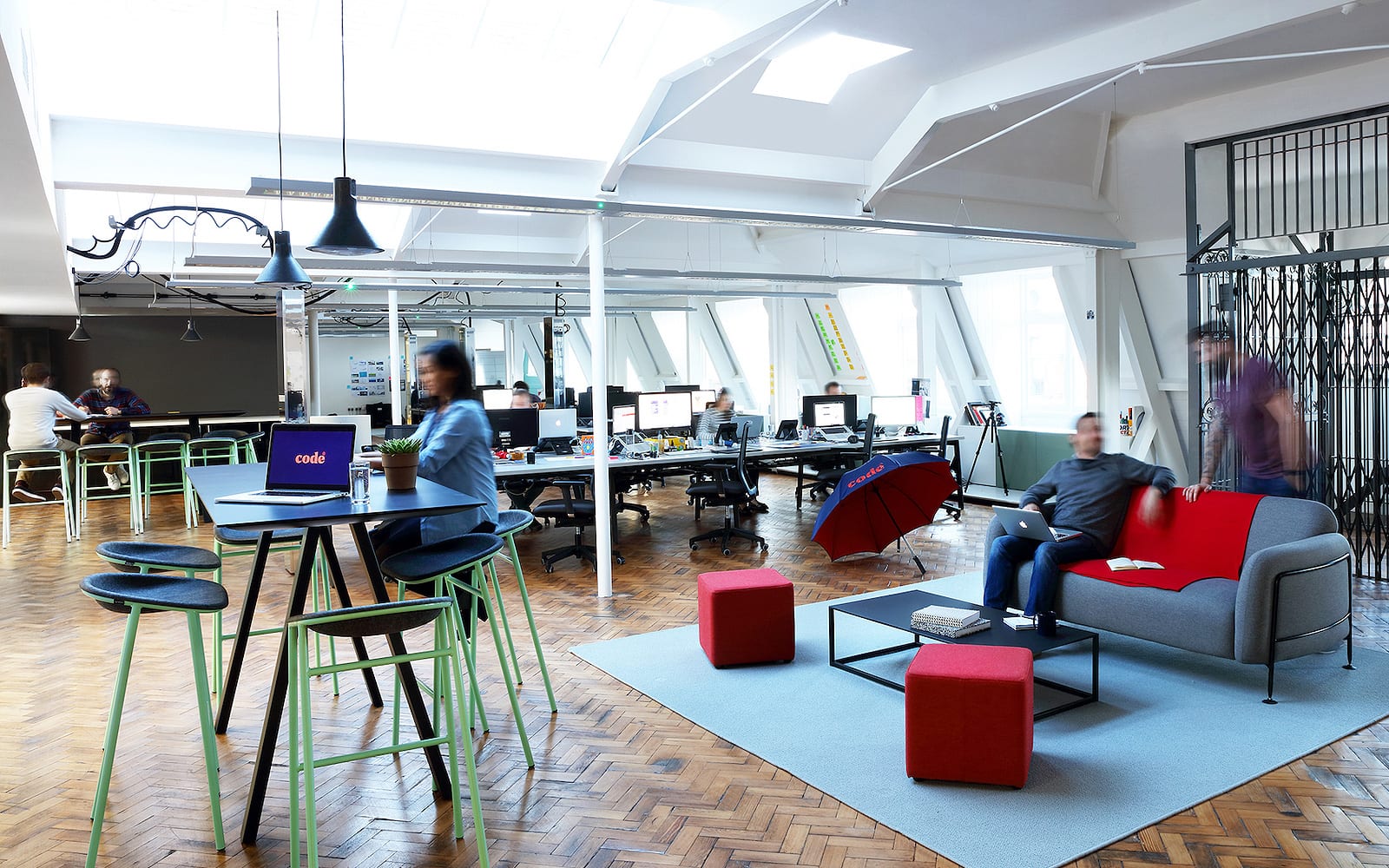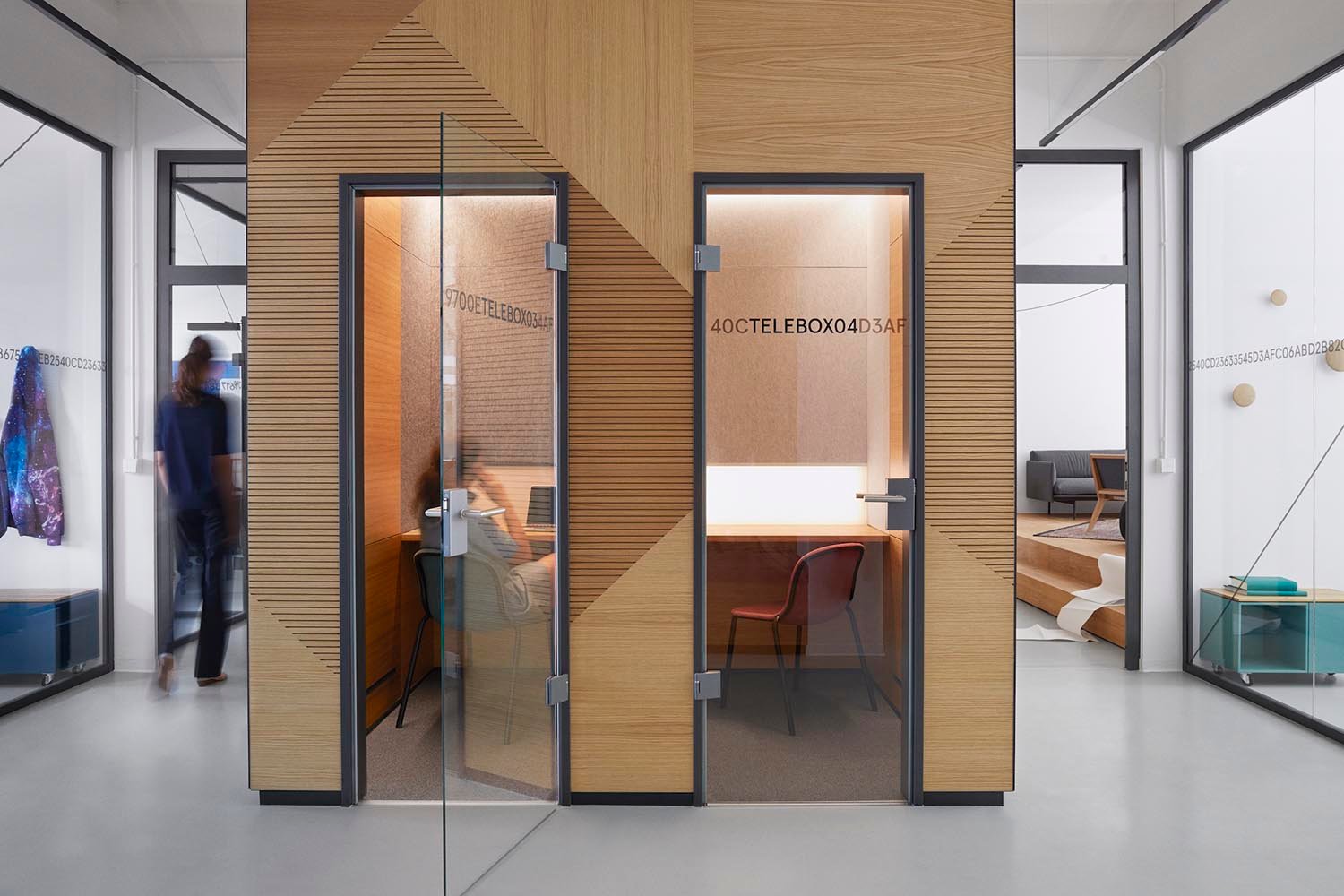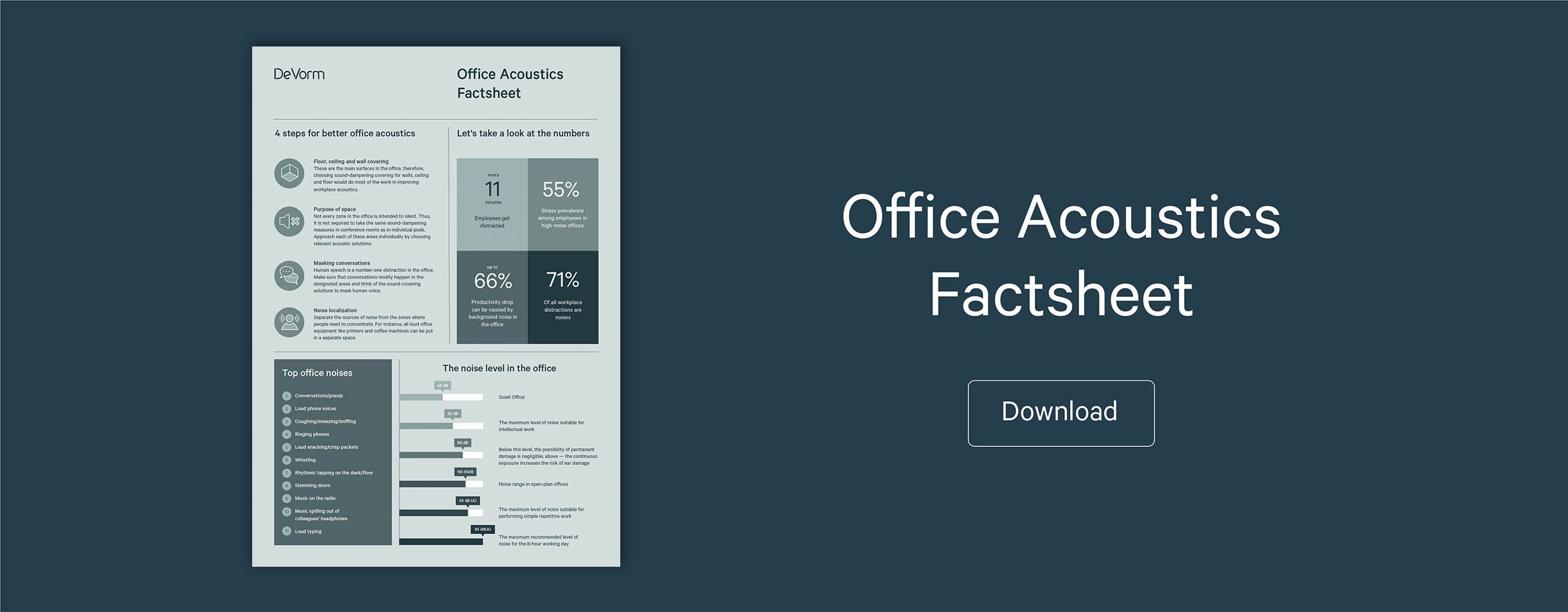Journal
How Acoustic Challenges Impact Overall Well-being in the Office
Why do contemporary offices often have an open floor plan? Among other things, it was introduced for promoting cooperation and interaction amongst teams. On the other hand however, an open workplace only works if it anticipates on the inconvenience it entails. Think of casual conversations, ringing phones or even the sound of typing on the keyboard. It’s evident that these issues have an impact on the employees’ productivity. But that isn’t the only issue. Research shows that open offices can increase stress levels and possibly spread germs — so it impacts health. Obviously, no employer or employee wants that. Let's look more closely at the definition of this problem because the actual impact is quite serious.

What does employee well-being mean in office spaces?
Yes, another catch-all term: well-being. What does that even mean in the workplace?
It’s about physical and mental health and beyond. In the workplace, it involves optimizing the health of all workers in the broadest sense of the word. Think of aspects such as the office environment, the team, employment conditions and the right balance between responsibilities, tasks, training and support from management. All these things influence individual happiness and job satisfaction.
Employers can positively influence several of these factors. The more progressive ones already facilitate in a practical sense, e.g. in work-out, bicycles, a healthy lunch and so on. However, the well-being of employees is more than just having access to a treadmill. Well-being is a much wider concept that ultimately needs a holistic approach. One interesting angle within this is the interior design perspective, especially the effect that interior design has on acoustics. So let’s dive into the reasons for challenging acoustic problems.
What causes acoustic challenges?
It probably won’t surprise you that the widespread adoption of the open-plan office has led to greater challenges in terms of privacy and proper sound control — with a major impact on employees’ well-being as a result.
72% of office workers are dissatisfied about the privacy of their workplace
These trends are caused by:
- • The creation of collaborative areas that increase the sound level as a result of the interaction in such areas.
• The increasing density of workplaces, people work closely together. Lack of privacy is one of the results. A study shows that 72% of employees are dissatisfied with the privacy of their workplace.
• The growth of architectural design trends within office buildings, think of exposed ceilings where no thought has been given to the acoustics — with reverberation problems as a result.
• Different departments in one area, which keeps you updated of each other, but at the same time you witness irrelevant conversations and distractions.
The message is loud and clear. An open-plan office has a negative impact on the quality of the acoustics. The sounds are not absorbed by the environment and will reverberate and echo.
 FULL NODE, interior design by LXSY Architekten
FULL NODE, interior design by LXSY Architekten
Reverberation and echo: the difference
When are we talking about reverberation or echo? Sometimes there are misunderstandings about this but they have one thing in common: both reverberation and echo are sounds as a result of an acoustic problem. Here’s the difference:
Reverberation is the persistence of sound after the sound source stops. It is caused by a lot of reflected waves. Our brain can perceive this as a continuous sound. Echo on the other hand, occurs when a sound impulse is heard twice. When this sound is slowed down, our brain can perceive it as a separate event, compared to a sound reverberation.
The diagram below clearly shows the difference:
 Source: 'What’s the difference between echo and reverberation?' by Clarke Roberts
Source: 'What’s the difference between echo and reverberation?' by Clarke Roberts
When does noise pollution occur?
Noise pollution occurs when the noise is continuous or when it interferes with the comfort/quality of employees with normal hearing sensitivity. The sounds are not absorbed by the environment and will reverberate and echo.
70% of office workers say they would be more productive if their offices were less noisy
All sounds affect us and cause a certain amount of stress. The best way is to ask the employees themselves; to what extent do they experience noise pollution and does it affect their productivity? Research shows that 70% of office workers say they are more productive when the office is less noisy.
If you want to solve an acoustic problem effectively, you need to investigate and tackle the cause of the problem, focusing on the specific situation. When all aspects are taken into account in your open-plan offices, your employees will have a better focus and concentration power.
 Code Computerlove office space, interior design by TJM Projects
Code Computerlove office space, interior design by TJM Projects
Factors in office design that affect employees’ well-being
Without jumping to conclusions, it’s for sure that noise harms a person's workplace well-being. Here we focus on the relationship between the well-being of employees in the office and noise (pollution).
Roughly half of the UK work in open-plan office environments, a system which was initially designed to encourage communication and collaboration between employees. Yet, with this design comes an increase in annoying and distracting workplace sounds, such as telephone ringtones, sudden bursts of laughter and phone conversations. These are proven to be distracting and have profound effects on employee stress levels and well-being, not to mention the impact they have on loss in productivity.
Penelope Harrall, Ramark Group
Whether the noise is dominant or not, it influences people on a psychological, behavioural and cognitive level. A few reasons why:
An open office...
• Increases the risk of mental health problems: recent research shows that 85% of British office workers experience noise that leads to stress. That stress can, among other things, lead to depression or anxiety. But, oddly enough, complete silence can have just as much impact; people then feel too self-conscious to speak or their focus is shifted to an abrupt happening.
• Spreads diseases: the bacteria from droplets of uncovered sneezing and coughing remain in the air for about 10 minutes. These droplets can make a person ill by breathing it in or even by intruding the skin. Objects such as office walls, acoustic panels, etc. form barriers to these projectiles, reducing the risk of disease.
• Has a negative impact on introverted people: without measures for this group of people an open office is not a good place to work. Introverts are sensitive to external stimuli and social interaction takes their energy. On the longer term, this causes stress or stress-related diseases. About half of people are introverted; imagine what that does to your company.
• Forces you to multi-task to a certain extent: because every moment, a part of your brain is focused on the environment, the people who are in it and what they do or say. Making it almost impossible to focus on one task. Systematic multi-tasking has can harm the brain.
 FULL NODE, interior design by LXSY Architekten
FULL NODE, interior design by LXSY Architekten
Silence! Or not?
For the well-being of employees, the right level of ambient sound is required. As mentioned before, the office should not be too loud or too quiet. Playing (somewhat neutral) music can be a solution to banish absolute silence and prevent people from being too self-conscious to speak.
A proper open-plan office has the necessary rooms, specially designed for absolute silence for those who need it at times. It must be possible to withdraw for a meeting or simply to work in a concentrated manner. Enable employees to choose where they pay their attention.

Colour and moods
Colour also has a psychological influence on people. Grey and white tones tend to arise depressed feelings, while blue has a more positive impact on people's mood for example. When you think of acoustic solutions, most products are available in many colours. Consider colour choice too, as a part of employees’ overall well-being.
Bringing it all together...
it’s clear that acoustic solutions are an essential part of the design process for offices or workspaces.
 FULL NODE, interior design by LXSY Architekten
FULL NODE, interior design by LXSY Architekten
A bigger perspective
Most employers want to contribute to the individual ambitions of their workers and thereby give a boost to the achievement of mutual objectives. So basically, contributing to the well-being in the office concerns a bigger goal. A healthy workplace is one where employers and employees work together to support and endeavor good health. Investing in overall well-being is a sustainable investment that’s beneficial for both parties. That is why we listed 5 acoustics solutions for office design.
After all: healthy workers are happy workers!



